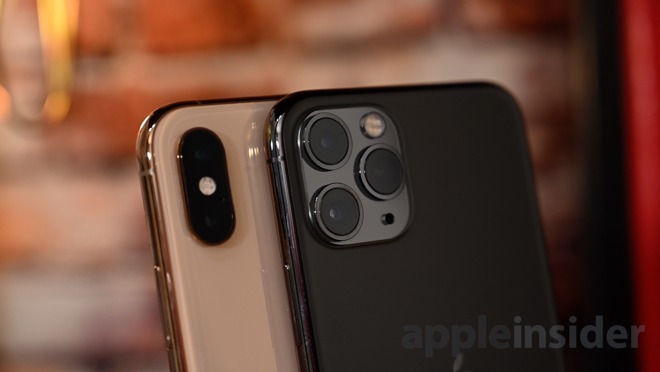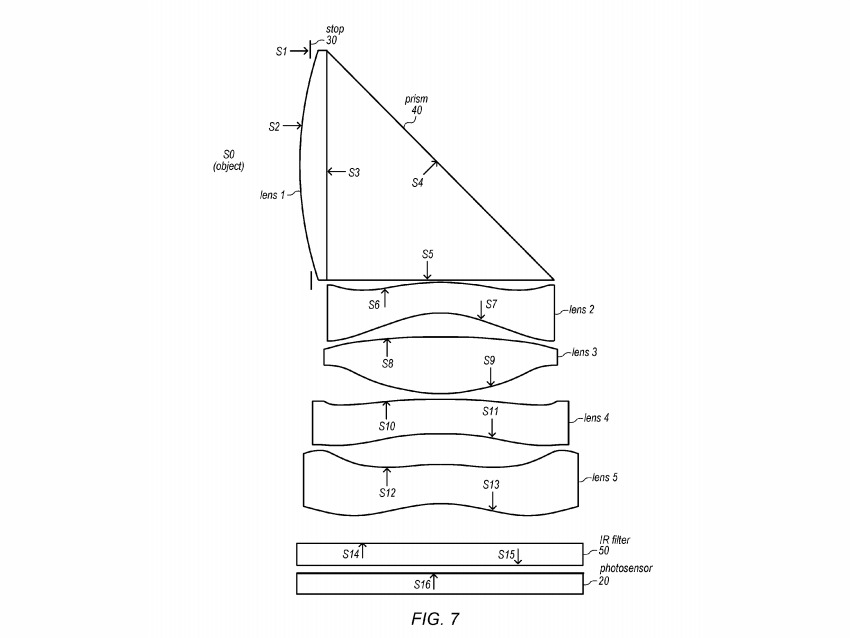That iPhone camera bump could get a lot smaller, if Apple's research pans out
Apple is trying to improve the image quality of its iPhone cameras even more and cut back on the external camera bump at the same time, by researching the use of a periscope-like lens assembly inside the body of the iPhone.
Smartphone cameras are probably the most commonly used devices for everyday photography, with their small stature and practically always available nature making them more useful than larger DSLRs or other standalone cameras. Over time, the imaging quality of smartphones has caught up with the higher-quality systems used by purpose-built photographic devices, with similar levels of resolutions offered by the imaging sensors in both categories of hardware.
However, while the sensor has improved, the lens systems used in smartphones haven't received as many improvements. In part, this is due to the small size of the camera lenses themselves, which are usually confined to a small length, while the lenses in DSLRs can offer far better imaging due to the room and the ability to extend practically as far forward from the camera sensor as the manufacturer wants.
Smartphone cameras obviously cannot offer this extension, as that would impact the thickness of the iPhone, or result in a large camera bump on the back, neither of which is desirable.
In a similar pair of patents titled "Folded lens system with five refractive lenses" and another with "three refractive lenses" granted by the U.S. Patent and Trademark Office on Tuesday, Apple seeks to correct the problem by using not only a combination of lenses to create an image, but also introducing length.
Rather than directly pointing out from the back of the smartphone, Apple's proposal hinges on using a prism to reflect the image at a 90-degree angle. This could allow for a camera sensor to be mounted an inch or two away from the usual location, for example, but still seem to be mounted conventionally, and with minimal protrusion out the back.
In effect, by changing the direction of light used for capturing the image to along the length or width of an iPhone, this gives Apple the ability to lengthen the distance used in the lens assembly.
Both patents differ when it comes to the number of lenses used, with one opting for three while the other uses five. Each of the elements use concave and convex elements to manipulate the light, but they offer two different purposes.
The five-element version can offer a 35mm-equivalent focal length in the range of 50 to 85mm, and with field of views of between 28 degrees and 41 degrees, making it useful for a wide-angle camera. Meanwhile, the three-element is said to provide a 35mm-equivalent of a 80-200mm focal length range, and with a field of view between 17.8 and 28.5 degrees, which would put it as a telephoto assembly.
In theory, this would mean Apple could use one of each type of assembly to offer the commonly-used telephoto and wide-angle shooters of a dual-lens camera, and leaves open the possibility of a third arrangement for an ultra-wide version.
Apple produces numerous patent application filings on a weekly basis, but while the documents indicate areas of interest for Apple's research and development areas, it does not guarantee the concepts will appear in a future product or service.
This is not the only camera-related patent application Apple has made, with one June proposal offering a camera sensor for the Apple Watch, embedded within the strap of the wearable device.
 Malcolm Owen
Malcolm Owen












 Wesley Hilliard
Wesley Hilliard
 Andrew Orr
Andrew Orr



 Amber Neely
Amber Neely

 William Gallagher
William Gallagher







